You have learnt the need for indicators and the uses of a moving average (MA) in Part 1. With the introduction of the purposes of a moving average, allow me to show you how the 3 types of moving averages differ visually before diving into the application and strategies.
That’s a chart with the 3 types of MA – the simple moving average (SMA) in blue, weighted moving average (WMA) in orange, and exponential moving average (EMA) in purple.
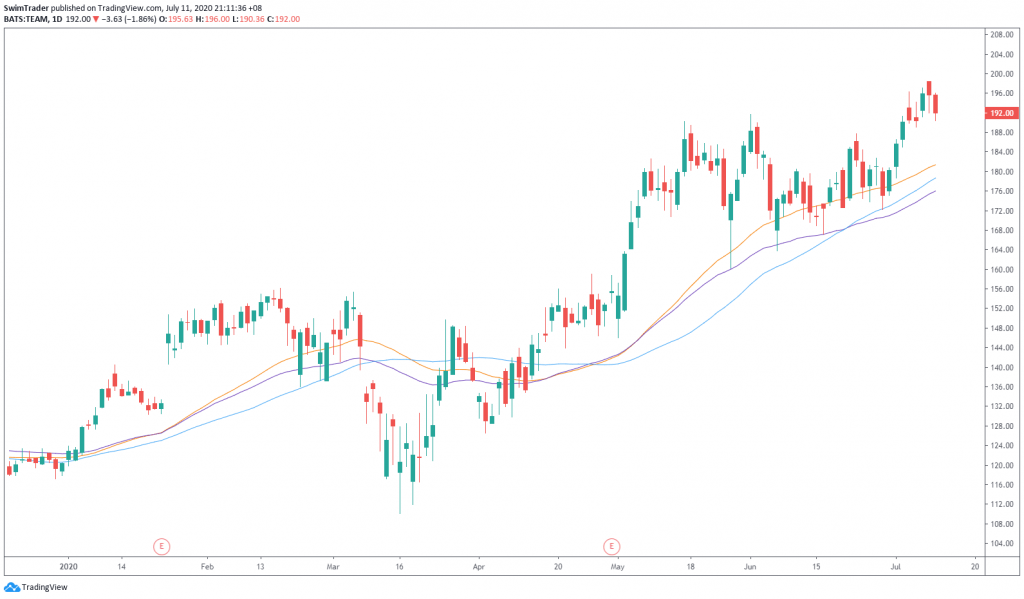
What are the differences that you notice?
Which MA To Use?
SMA and EMA are the most widely used MAs. There are a few good secrets to using them and you’ll find out in the next section.
I will use the chart of TEAM for the bull market and EXC for the bear market as examples throughout this article.
5 Secret Sauces
#1 The Direction
MAs can help you form a direction bias. Here’s what I mean:
When price is above its MA, you should look for buying opportunities.

When price is below its MA, you should look for shorting opportunities.

MAs work brilliantly when prices are trending.
#2 The Slope
If you enter purely based on the 1st secret sauce, you’ll get whipsawed out of your position when prices start to range (shown in the yellow boxes).
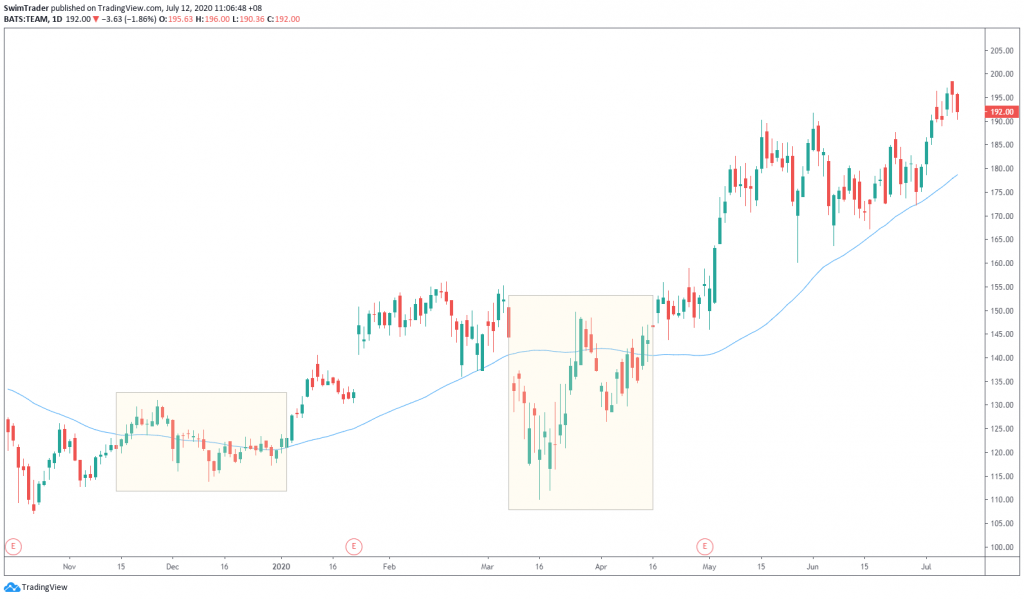

To overcome that, wait for the MA to slope up for at least 2 sessions before you go long, and slope down for at least 2 sessions before you sell short.

#3 The Crossovers
The golden cross happens when the 50-day SMA (mid-term in blue) crosses above the 200-day SMA (long-term in red). This is a bullish scenario where only buying is permitted.
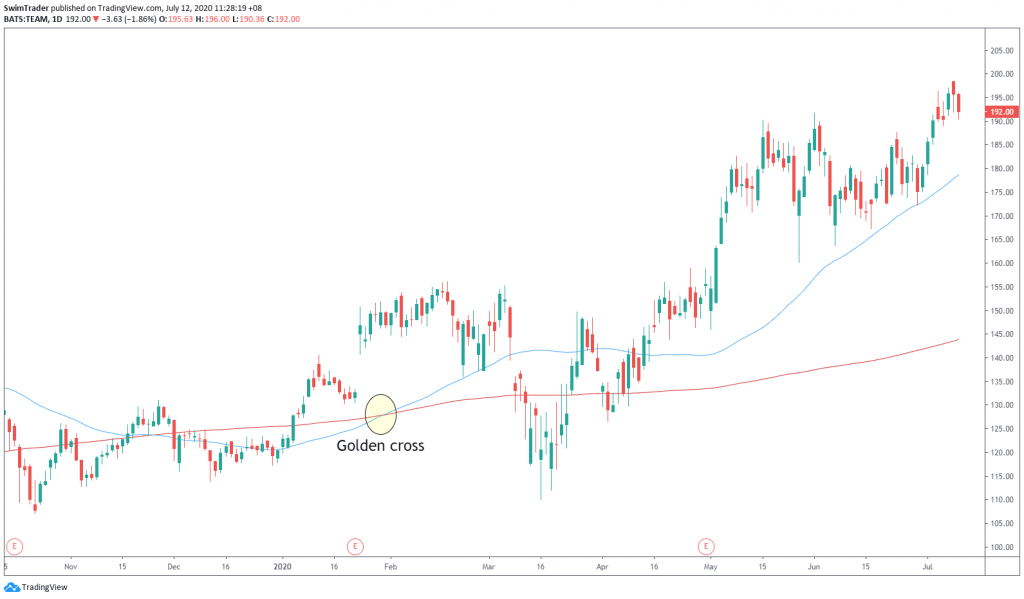
When the 50-day SMA (blue) crosses below the 200-day SMA (red), a death cross has occurred. This is bearish and you should be looking for short selling opportunities.
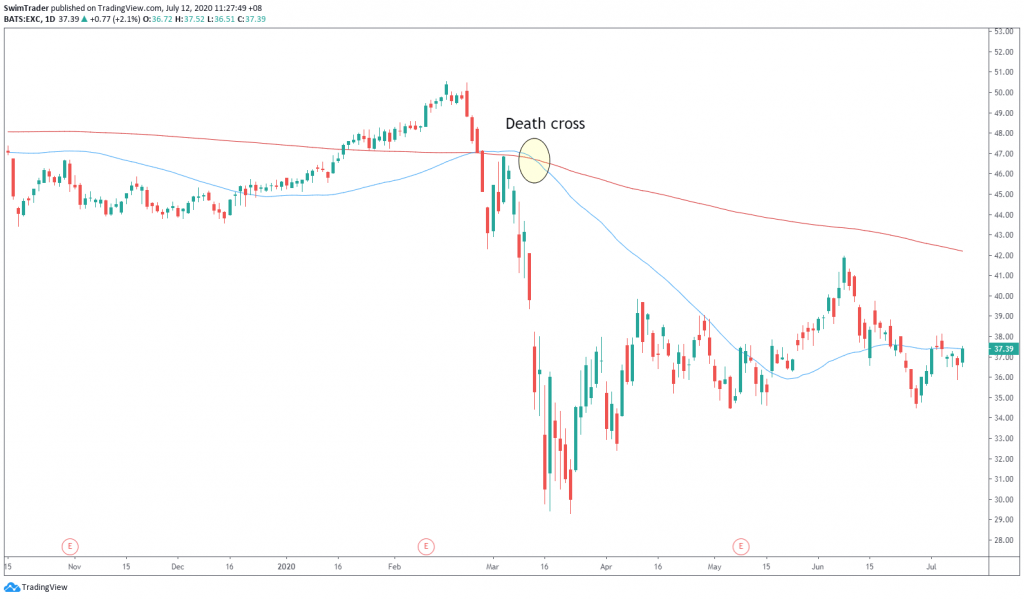
Yes, you can change the parameters of MAs (eg. 25- and 55- day SMA). Additionally, you can use EMAs instead of SMAs. You can even add a 3rd or 4th MA. Why?
Having another MA to cross greatly reduces the chance of getting whipsawed.
Feel free to try out the different MAs and their parameters to suit your trading style.
The image below illustrates how you can make an entry when you have 3 MAs (50-day SMA in blue, 80-day SMA in purple, and 200-day SMA in red). Wait for a crossover of the faster 2 MAs (ie the blue and purple line) for a Buy/Sell signal. Prices must be above the slowest MA (ie 200-day SMA) for the crossover to be a bullish one.

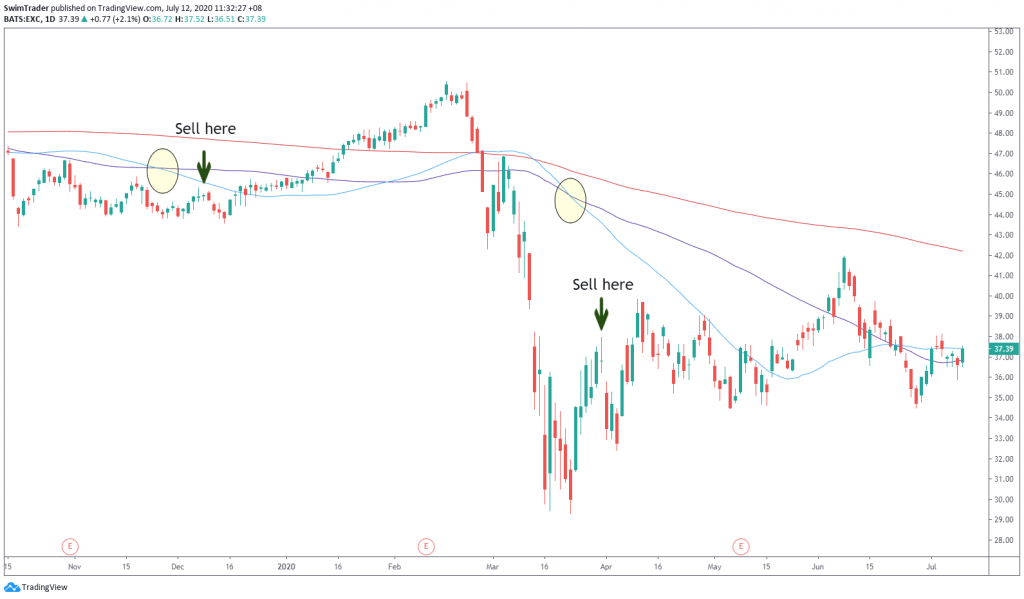
Having 3 MAs, there will be more Buy/Sell signals generated. The above chart of TEAM has got 3 Buy signals as opposed to just 1 Buy signal if you were to use a 2 MA crossover.
#4 The Duration
The shorter the period of your MA, the more responsive it will be to the trend. But there is a trade-off. You will get more false alerts and get stopped out more often. This can be costly in the long run as commissions will quickly add up.
If you use a longer period, you can avoid the whipsaw of prices but you will also get lesser signals as demonstrated in the 2nd and 3rd Secret Sauce.
#5 The Support And Resistance
What if you missed the entry on the crossover? Fret not! Moving averages act as dynamic support and resistance.
In a strong uptrend, you can buy when prices have dipped and bounced off the MA of a shorter period. In a strong downtrend, you can sell short when prices have rallied and bounced away from the MA of a shorter period. Here’s an example:
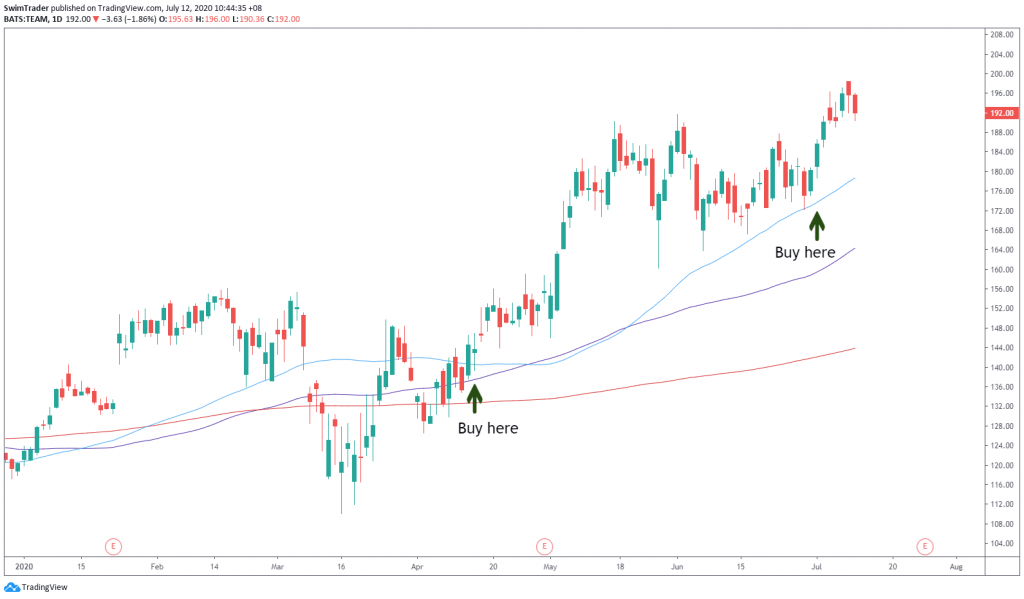

Things You Must Remember
EMAs are more responsive than SMAs.
The 5 secret sauces explained in detail to help you spot wonderful trading opportunities.
Start using them to grow your trading capital today!
Here’s What You Can Do To Improve Your Trading Right Now:
#1 Register for our market outlook webinars by clicking here
#2 Join us in our Facebook Group as we can discuss the various ways of applying this by clicking here
#3 Never miss another market update; get it delivered to you via Telegram by clicking here
#4 Grab a front row seat and discover how you can expand your trading arsenal in our FREE courses (for a limited time only) by clicking here
Trade safe!

